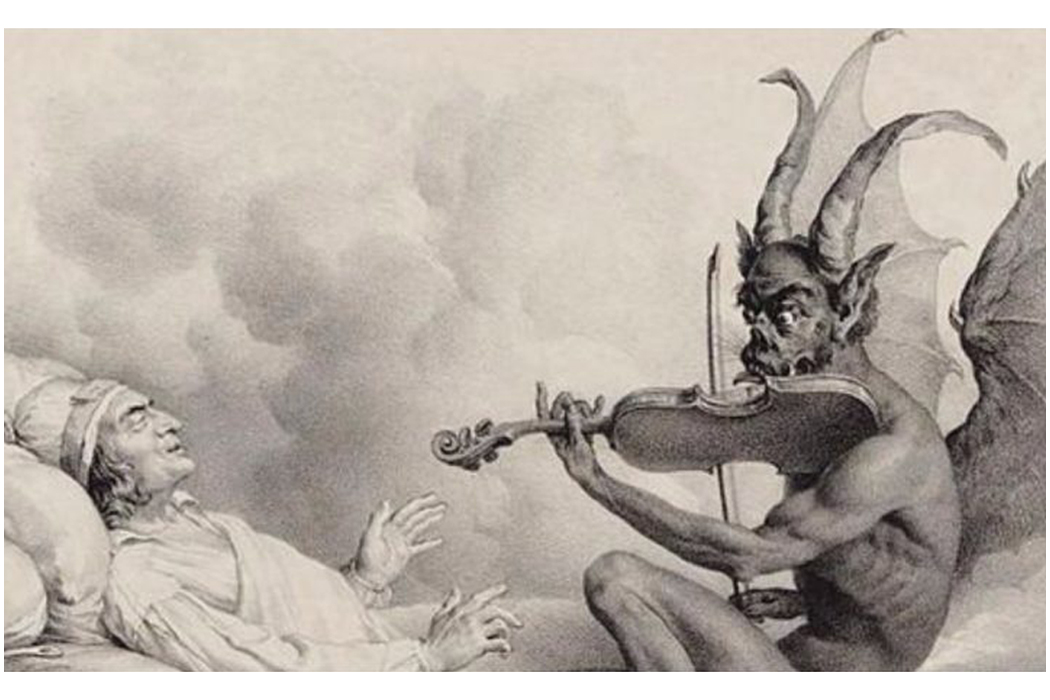
+ Take your modern jazz piano and hip-hop beat making to new heights with Soundfly’s new course, Elijah Fox: Impressionist Piano & Production!
This Is Your Brain on Music is a really good book about the neuroscience of music. There are about 4,000 good sentences in it. So it might seem petty to talk about the one sentence that made me sad, but that’s how sad it made me:
“Musicians refer to pleasing-sounding chords and intervals as consonant and the unpleasing ones as dissonant.”
Be a love: Take a Brillo pad and scrub that sentence from your monitor. If you have the book at home, scrub it out there as well. Page 62. I’ll wait.
By the end of this post, I hope you’ll see how tragically wrongheaded it is to call dissonance “unpleasing.” The really effective, moving moments in music almost always include dissonance, sometimes a lot of it, just as the really effective rollercoasters almost always include hills. These aren’t bugs — they are features.
I mean gah.
A flat rollercoaster and dissonance-free music are so off-point that they are given completely new names, like “light rail” and “Enya.” Good for getting you massaged and moving you from place to place, maybe, but not for moving you. The interplay of dissonance and consonance, tension and release, is one of the ingredients that makes Western music work. It’s a sliding scale defined by more or less complexity in the relationship of pitches.
Pitch combinations aren’t just “consonant” or “dissonant” — like everything we seem to talk about here, there’s a spectrum. So please keep your arms inside the vehicle as we head into that spectrum.
A brief aside…
We recently launched a video on our YouTube channel that teaches any musician how to memorize every common note interval using only movie themes from John Williams scores. It’s…pretty rad. Musicians, composers, and curiosity-junkies, check it out and subscribe if you like that sorta thing!
Some Quick Terms
The distance between two pitches is called an interval. If it’s one note following another like a melody, it’s a melodic interval. Two notes at the same time is an harmonic interval. That’s where the real emotional juice is.
Intervals are named by the distance between the notes. From any note up to the very next note name is called a second. Skip one and it’s a third. Skip two names and it’s a fourth, and so on. So in the scale below…

C→D, E→F, and A→B are all seconds. C→E is a third. C→F is a fourth. C→A is a sixth. Avoid the freshman mistake. The first note is 1, not zero. So to figure out C to G, you count C-D-E-F-G, 1-2-3-4-5; it’s a fifth.
What about flats and sharps?
C→D♭ is still called a second because it’s going from one pitch name to the next. But it’s a minor second (or half-step), the “Jaws interval,” duh-dump. C→D is a major second (or whole step), the “Chopsticks interval,” which is less dissonant than the minor (depending on the child and the piano, I guess). And C→G♭ is still a fifth, but a diminished fifth, a.k.a. a tritone, a.k.a. “the devil in music,” about which more below.
If this were my theory class, we’d now drill intervals for two weeks. You’d learn how to identify and spell minor, major, perfect, augmented, and diminished intervals starting on every pitch. You’d bite back your tears, determined to meet the interval on its own terms, driven by grudging respect for my lunatic quest for perfection.
But we’re doing just enough theory here, so we’ll skim lightly over the cool surface, emphasizing dissonance, with the devil as our special guest.
Consonance and Dissonance
The technical explanation of consonance and dissonance is the ratio of vibrations of the two pitches.
The ultimate consonance is a unison. It’s not harmony — just one note playing with itself, which is sinful. The ratio is 1:1. Add another pitch and you get intervals. Octaves, fifths, fourths, and thirds are very consonant. They sound like this:
Simple vibration ratios are consonant, in part because there’s a lot of matching and little close conflict in their overtones. The octave of “Some – where” in “Somewhere over the rainbow” is the most consonant — the top note vibrates twice as fast as the bottom, a simple ratio of 1:2. A fifth is a ratio of 2:3, and a fourth is 3:4, etc.
That’s the technical explanation. But the most important thing is that you can hear it. Here’s some real consonance at work, Aaron Copland’s Fanfare for the Common Man:
Hear how open, relaxed, stable, and confident everything is? That’s because there’s little conflict between the pitches, no complex vibrations.
Now let’s get dissonant:
These are more tense, less stable. You can hear a lot of conflict between the pitches, which makes these relatively dissonant. They “want” to resolve to a more consonant interval, which drives the drama in music. And the ratios are getting complex — 8:15, 8:9, and a wickedly cool √2:1, respectively.
That last one is especially interesting. It’s a tritone, an internal three whole steps across (hence the name). It divides the octave exactly in half, so you’d think it would be consonant. But when you can’t even express the ratio without resorting to irrational numbers, you know you’re not in Kansas anymore.
Sure enough, the extreme dissonance and instability of the tritone has been recognized for a thousand years at least. Monk and music theorist Guido d’Arezzo called it Diabolus in musica, or “the Devil in music.” The tritone loved that and immediately had it tattooed on its lower note, at which point it was banned from church music for several centuries (true dat).
But before we make the leap from “tense and unstable” to “unpleasing,” let’s put them in context. Here’s a minor second, first alone, then in context:
And here’s a tritone in two very different settings — one romantic, one funny:
See? Of course the tritone can be damn unpleasant when it needs to be. Turn it up to freak out your dog:
And here’s one you’ll recognize from childhood:
The brass start with a tritone, then the Witch’s Guards come in singing a fifth — yo ee oh…yohhh, oh, or whatever. The combination is confident power (fifth) + sinister threat (tritone).
But back to dissonance being amazing. Here are four short excerpts with nearly continuous dissonance. These are some of my favorite passages on the planet, so if you skip it, don’t tell me:
And dissonance goes way beyond that. Epitaph for Moonlight by the Canadian composer Murray Shafer pushes pitch just about as far as it can go, and he does it with the human voice. Follow the pencil (4:38):
I know that’s not everyone’s cup, but boy is it mine.
Music without dissonance…well, just imagine a drama, or even a comedy, entirely devoid of conflict. That would be unpleasant. It might make for nice lunch conversation, but it doesn’t make for good theatre.
In addition to being rich and beautiful on its own terms, we need dissonance to give consonance its raison d’être. Sliding the level of tension up and down the continuum of consonance and dissonance by combining pitches, intervals, and chords is one of the critical emotional tools of the composer.
And even if your tastes don’t run as dissonant as mine, believe me — you wouldn’t want to do without it.
Improve your music with creativity & curiosity on Soundfly.
Subscribe to our YouTube channel for weekly videos, or join Soundfly’s all-access membership to all of our artist-led online music courses, an invite to join our Discord community forum, exclusive discount perks from partner brands, access to artist Q&As and workshops, and more.




